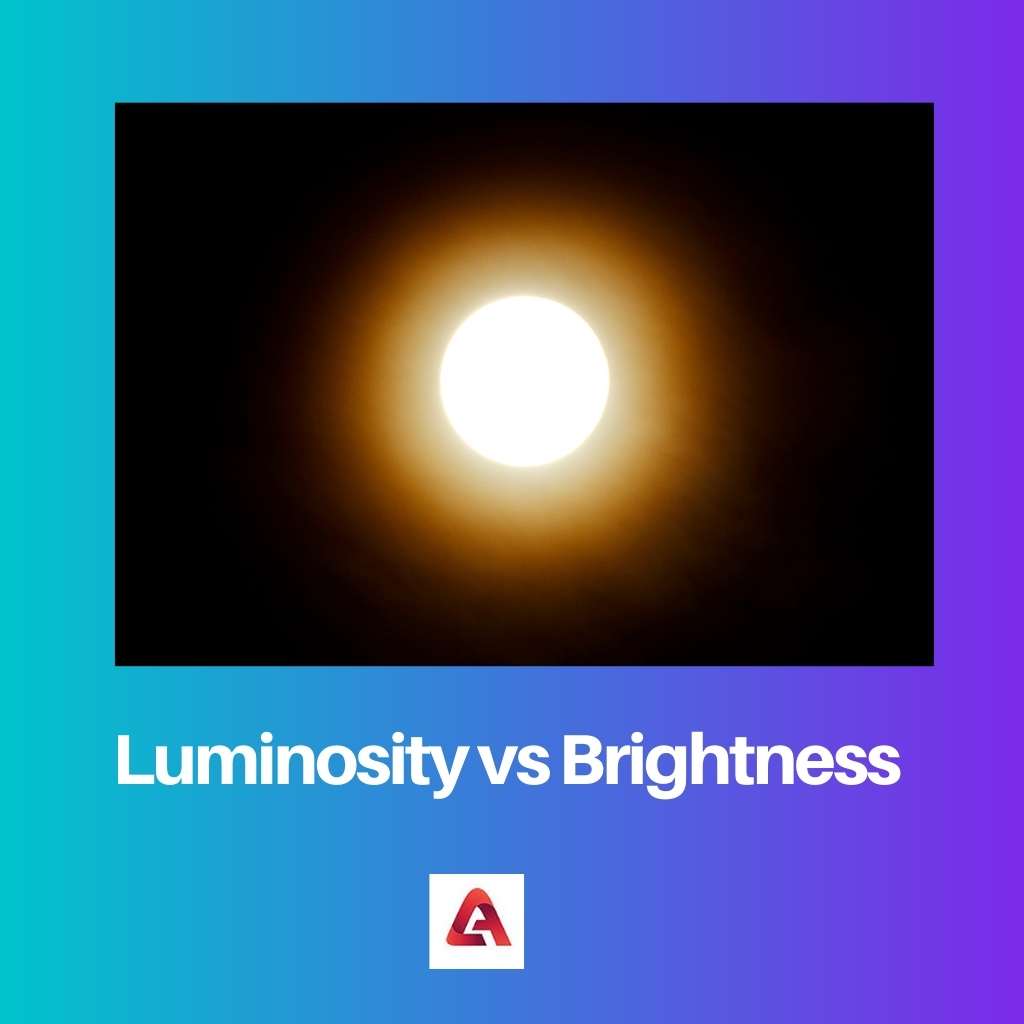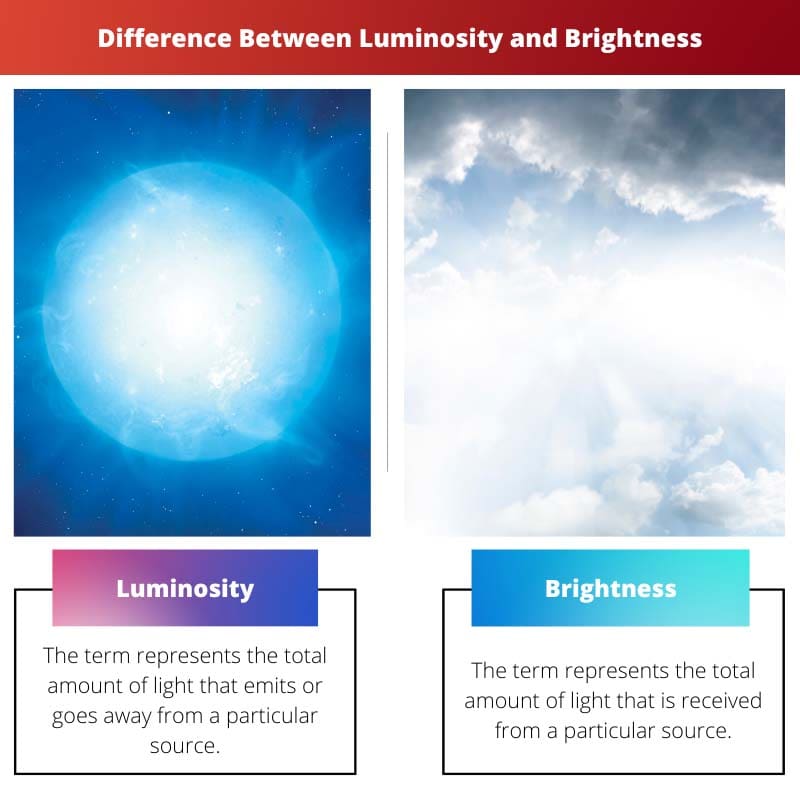From the very beginning of human civilization, the concept of light and brightness has always been a fascinating concept for humans. In today’s world, it is almost impossible to live a normal day for any human being without having access to the concept of brightness and light.
However, aremultiple concepts are emerging from this very one, and it is essential to deal with some of the most crucial ones to develop a better understanding. Luminosity and brightness are two such concepts.
Key Takeaways
- Luminosity is the total amount of energy emitted by an object, while brightness is the amount of light perceived by an observer.
- Luminosity is an intrinsic property of an object, whereas brightness depends on the object’s distance from the observer and other factors.
- Luminosity is measured in units of energy, such as watts or ergs per second, while brightness is measured in units of luminance, like candelas per square meter.
Luminosity vs Brightness
Luminosity refers to the total energy an object emits per unit time, measured in watts. Luminosity is an intrinsic property of the thing. Brightness refers to the amount of light that an observer receives from a particular source, and it depends on the luminosity of the head.

Luminosity is a term that represents the total amount of light radiated or emitted through a particular source of light in a given time. Usually, it is measured by simple light measuring units such as watts and joules.
A standard parameter to measure the luminosity of any object happens to be the sun’s luminosity, as the sun is the most significant source of light in the universe.
But on the other hand, the term brightness denotes the total amount of light received through a particular light source. It might seem like a difficult concept to conceptualize and interpret, but in reality, it is simple and applied throughout our day-to-day activities.
The term can also be said to represent the total amount of light that shines through an object.
Comparison Table
| Parameters of Comparison | Luminosity | Brightness |
|---|---|---|
| Meaning | The term represents the total amount of light that emits or goes away from a particular source. | This factor is affected by certain other factors like the distance, tec. |
| Denotes | Light emitted | Light received |
| Represented by | Watt | Watt per unit |
| Depends on | Only dependent on the radiated waves. | Dependent on both radiated and reflected waves. |
| Affected by | This factor is independent of other factors | This factor is affected by certain other factors like the distance, etc. |
What is Luminosity?
The term luminosity shows the total amount of light radiated or emitted through a particular source in a specific unit of time. Still, in most cases, it is measured in the department of Watt.
It can also be said that this term is quantifiable to measure the amount of light that radiates from a particular medium.
It is a very important term in specific fields, such as astrology and photography, as many concepts are based upon the very foundation of this term.
Apart from being expressed in Watt, it is sometimes said in another unit called candela per square. However, one distinctive quality of this particular term is that it is independent of other factors and works in its sphere.
Factors such as time and distance have an almost negligible effect on this concept, and therefore it is very accessible in its way. A fascinating fact attached to luminosity is that when it comes to measuring the luminosity of stars, a very different unit is usua,lly known as solar luminosity.

What is Brightness?
Brightness happens to be a term that is used in our day-to-day life. Still, sometimes it plays a very crucial role insert in professional areas such as the area of astronomy photography and optical light.
The term, in its most straightforward meaning, represents the total amount of light visible to a person’s eyes.
In other words, it can be explained as a term that denotes the total amount of light received in a particular object or source of light and eventually showcased in an open environment.
This concept is slightly based upon certain other factors and can be easily affected by factors like distance and time; therefore, a compassionate approach is needed to measure and conceptualize the whole foundation of brightness.
It is expressed in the unit of watts per unit, and two major types of waves are set to contribute to forming the total quantum of brightness that is radiated and reflected waves. In its grammatical form, brightness is the direct opposite of dullness and showcases the presence of light and visibility in some areas.

Main Differences Between Luminosity and Brightness
- Luminosity is a term showing how much light emits from something, while on the other hand, Brightness shows how much light is received.
- Luminosity is shown in candela per square meter, while on the other hand, Brightness is shown in lumens.
- Luminosity is expressed in Watt while, on the other hand, Brightness is expressed in Watt per unit.
- Luminosity showcases emittance, while on the other hand, Brightness showcases receiving.
- Luminosity is an independent factor, while on the other hand, Brightness is dependent upon factors like distance, etc.

References
- https://www.osapublishing.org/abstract.cfm?uri=josa-62-1-111
- https://www.osapublishing.org/abstract.cfm?uri=josa-53-3-375

It’s commendable that the article refers to credible sources to support the information provided about luminosity and brightness.
The inclusion of reputable sources strengthens the reliability of the article’s information on luminosity and brightness.
The references provided enhance the validity of the content and establish its credibility.
I’m glad that the article was able to explain the differences between luminosity and brightness, giving a good understanding of the two terms.
Indeed, the article helps to provide a clear understanding of these terms and their significance in different fields.
The differentiation between luminosity and brightness is aptly articulated in this article, offering a comprehensive comprehension of the subject matter.
I find this article’s tone to be a bit dull. It may have been more engaging if the terms were explained with more enthusiasm.
Engaging or not, the content is rich in information and provides clarity about luminosity and brightness.
I think the straightforward approach is more effective in conveying the meanings of these complex terms.
The article effectively establishes the fundamental differences between luminosity and brightness, making it a valuable resource for understanding these concepts.
The article offers an insightful comparison of luminosity and brightness, providing a comprehensive understanding of these concepts.
Absolutely, the side-by-side differentiation of these terms enhances the clarity of their meanings, making it beneficial for readers.